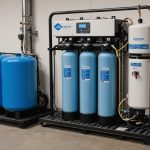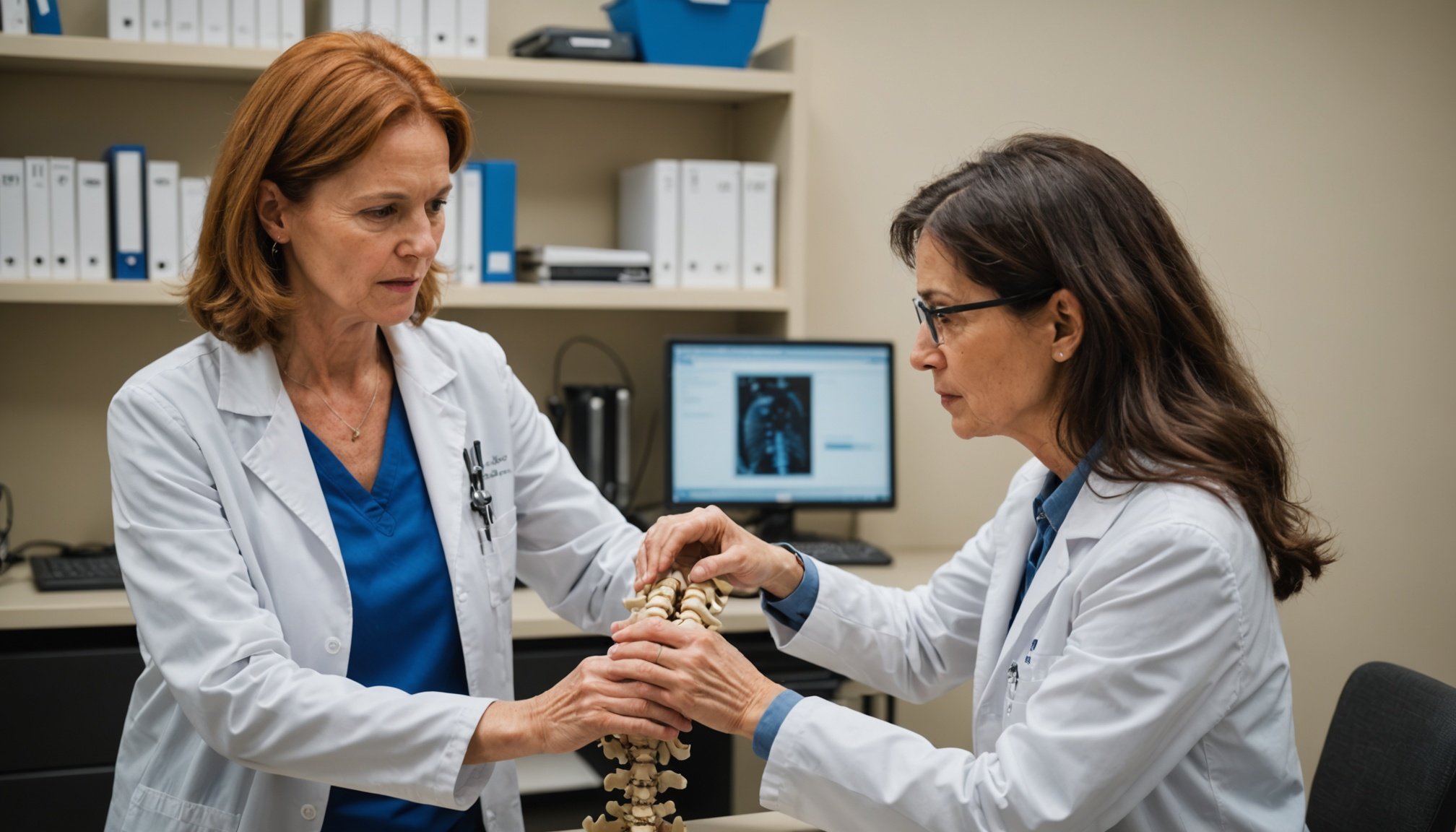Uncovering Innovations: Cutting-Edge Methods for Early Osteoporosis Detection
Osteoporosis, a condition characterized by the weakening of bones, is a silent yet pervasive health issue affecting millions worldwide. Early detection is crucial for preventing fractures and improving treatment outcomes. In this article, we will delve into the latest innovations and methods that are revolutionizing the early detection of osteoporosis.
Why Early Detection Matters
Detecting osteoporosis early can significantly impact treatment options and success rates. This condition often remains asymptomatic until a fracture occurs, making early diagnosis paramount. Advanced imaging techniques and new technologies are at the forefront of this effort.
Have you seen this : Discovering the Effectiveness of Acupuncture for Relieving Migraine Headaches
“Early detection not only improves survival rates but also enhances the quality of life. Patients can begin treatment sooner, reducing the extent of interventions needed,” notes a healthcare professional at Hollywood Diagnostics, a leading diagnostic center in South Florida.
Advanced Imaging Techniques
Advanced imaging technologies play a vital role in the early detection of osteoporosis.
This might interest you : Discover the Most Recent Advances in Prenatal Genetic Screening: What You Need to Know!
DEXA Scans
Dual-Energy X-ray Absorptiometry (DEXA) scans are a cornerstone in assessing bone density. These scans are crucial for detecting osteoporosis and osteopenia, conditions that weaken bones and increase the risk of fractures. DEXA scans provide a clear and detailed view of bone mineral density (BMD), allowing healthcare professionals to identify issues before they become serious.
PET Scans
Positron Emission Tomography (PET) scans, though primarily used for cancer detection, also have applications in assessing bone health. While not directly used for osteoporosis diagnosis, PET scans can provide insights into metabolic activity in bones, which can be useful in certain clinical contexts.
MRI and CT Scans
Magnetic Resonance Imaging (MRI) and Computed Tomography (CT) scans are also valuable tools. For instance, MRI scans can reveal changes in bone structure and cartilage loss, particularly in cases of long-term space residents or bedridden patients. CT scans, especially when combined with machine learning, can predict osteopenia and osteoporosis from chest CT scans.
The Role of Artificial Intelligence (AI)
AI is transforming the landscape of osteoporosis detection with its ability to analyze medical images accurately and efficiently.
Deep Learning Models
Deep learning models, particularly Convolutional Neural Networks (CNNs), have shown remarkable accuracy in detecting osteoporosis from X-ray images. Studies have demonstrated that these models can classify knee X-ray images into normal, osteopenia, and osteoporosis classes with high accuracy rates. For example, a study using the AlexNet model achieved an accuracy of 78.95%, while another using VGG16 and Random Forest achieved an accuracy of 95%.
AI-Assisted Software
Acer Medical’s VeriOsteo OP, approved by the Indonesian Ministry of Health, uses AI to analyze BMD and predict T-scores in X-ray images. This software supports clinicians in assessing potential abnormalities in BMD, making it a valuable tool in early detection and risk assessment.
Real-World Applications and Case Studies
The impact of these advanced methods is evident in various real-world applications and case studies.
Case Study: Early Detection in Space
Research conducted by the European Space Agency (ESA) highlights the importance of early detection in unique environments. Astronauts lose up to 1% of their bone mass each month in space, similar to osteoporosis. Studies using tomography scans and blood and urine markers are helping to detect these changes quickly, which can also benefit patients on Earth.
Case Study: Clinical Practice
In clinical practice, early detection through advanced imaging has significantly improved patient outcomes. For instance, a study at Hollywood Diagnostics showed that patients who received early diagnoses through CT scans had a 20% higher success rate in their treatment. This underscores the importance of advanced imaging in improving patient outcomes.
Future of Advanced Imaging
As technology continues to advance, the future of osteoporosis detection looks promising.
Integration of AI and Machine Learning
The integration of AI and machine learning into imaging techniques is expected to enhance the accuracy and efficiency of diagnostics. These technologies can provide more personalized treatment plans by analyzing imaging data alongside patient histories. For example, Hollywood Diagnostics aims to stay at the forefront of these advancements, continuously exploring new technologies to improve patient care.
Development of New Technologies
New technologies, such as the Skinsuit developed by the ESA, are also being tested. This suit is designed to combat the effects of microgravity on the spine and muscles, which can contribute to bone loss. Such innovations can have long-term benefits for both space travelers and bedridden patients on Earth.
Practical Insights and Actionable Advice
Here are some practical insights and actionable advice for individuals at risk of osteoporosis:
Risk Assessment
- Get Regular Check-Ups: Regular DEXA scans can help assess BMD and identify early signs of osteoporosis.
- Maintain a Healthy Lifestyle: A balanced diet rich in calcium and vitamin D, along with regular exercise, can help maintain bone health.
- Avoid Risk Factors: Smoking and excessive alcohol consumption can increase the risk of osteoporosis. Avoiding these risk factors can help in maintaining bone health.
Treatment Options
- Medications: Various medications, including bisphosphonates and hormone therapy, can help in treating osteoporosis.
- Lifestyle Changes: Making lifestyle changes such as improving diet and increasing physical activity can complement medical treatments.
Using Advanced Imaging
- Leverage AI-Assisted Tools: Clinicians can use AI-assisted software like VeriOsteo OP to enhance the accuracy of BMD assessments.
- Combine Imaging Techniques: Using a combination of DEXA, MRI, and CT scans can provide a comprehensive view of bone health.
Detailed List of Advanced Imaging Techniques
Here is a detailed list of advanced imaging techniques used in osteoporosis detection:
-
DEXA Scans:
-
Assess bone mineral density (BMD)
-
Crucial for detecting osteoporosis and osteopenia
-
Provide clear and detailed views of bone density
-
PET Scans:
-
Primarily used for cancer detection but can provide insights into metabolic activity in bones
-
Useful in certain clinical contexts for assessing bone health
-
MRI Scans:
-
Reveal changes in bone structure and cartilage loss
-
Useful for long-term space residents or bedridden patients
-
CT Scans:
-
Predict osteopenia and osteoporosis from chest CT scans when combined with machine learning
-
Provide detailed images of bone structure
-
AI-Assisted Software:
-
Analyze BMD and predict T-scores in X-ray images
-
Enhance the accuracy of BMD assessments
Comparative Table of Deep Learning Models
Here is a comparative table of deep learning models used in osteoporosis detection:
| Model | Accuracy Rate | Sensitivity | Specificity | Study |
|---|---|---|---|---|
| AlexNet | 78.95% | – | – | Wani and Arora |
| VGG16 + Random Forest | 95% | – | – | Mane et al. |
| VGG16 | 81.2% | 91.1% | 68.9% | Jang et al. |
| ResNet | 82.61% | – | – | Kumar et al. |
| Deep Convolutional Neural Network (ImageNet) | 0.728 | 0.774 | – | Xie et al. |
Quotes and Insights from Scholars
“Detecting the disease as early as possible is crucial to prevent further bone density loss and complications related to knee osteoporosis and osteopenia. Traditional methods for detecting bone-related conditions are subjective and subject to human error. In contrast, automated and accurate diagnosis through deep learning models can enhance reliability,” notes a scholar from a recent study on deep learning models for osteoporosis detection.
“The integration of advanced imaging with AI could lead to more personalized treatment plans. By analyzing imaging data alongside patient histories, healthcare providers can tailor interventions to individual needs,” emphasizes a healthcare expert at Hollywood Diagnostics.
Early detection of osteoporosis is a critical aspect of maintaining bone health and preventing fractures. Advanced imaging techniques, combined with AI and machine learning, are revolutionizing the field by providing accurate, efficient, and personalized diagnostic tools. As these technologies continue to evolve, the future of osteoporosis detection and treatment looks increasingly promising.
By leveraging these innovations, healthcare providers can offer better care, and patients can benefit from early interventions that improve their quality of life. Whether through DEXA scans, AI-assisted software, or deep learning models, the tools are now available to make a significant impact in the fight against osteoporosis.











